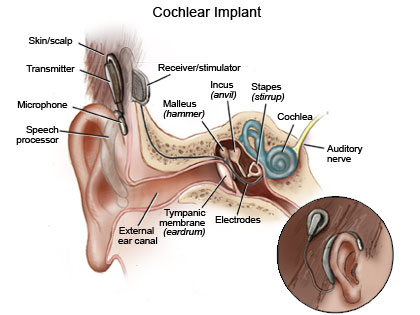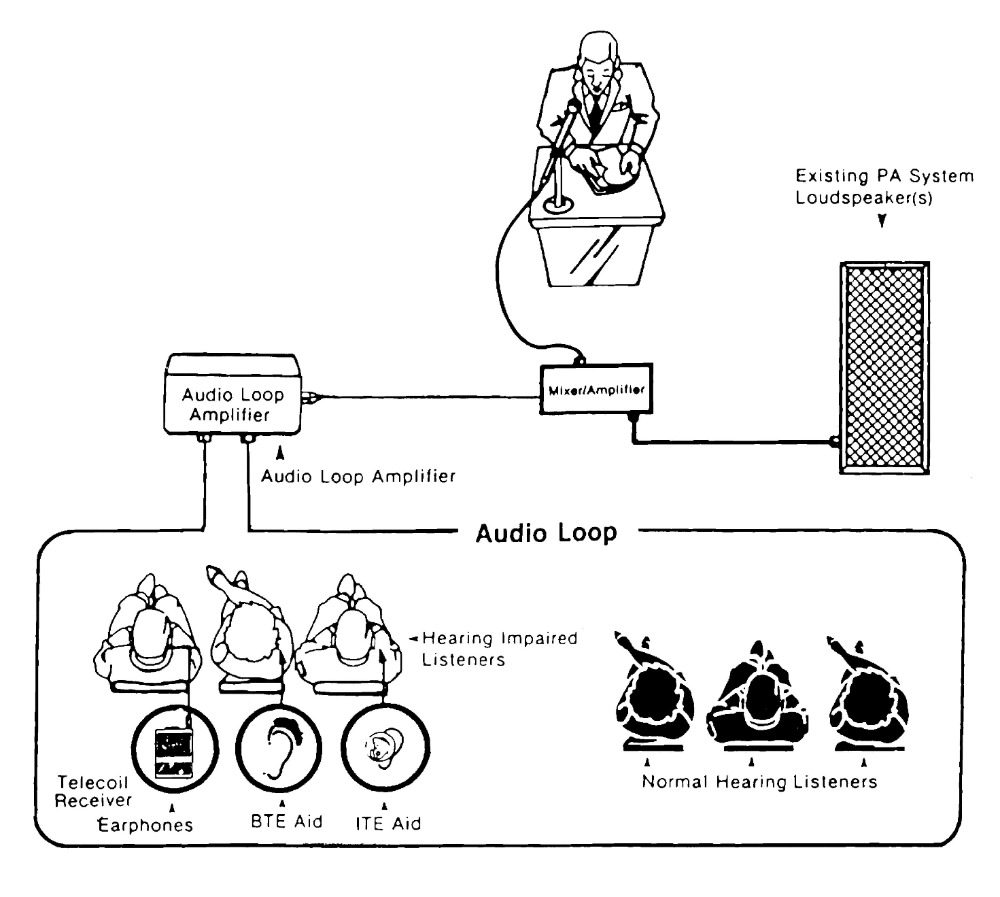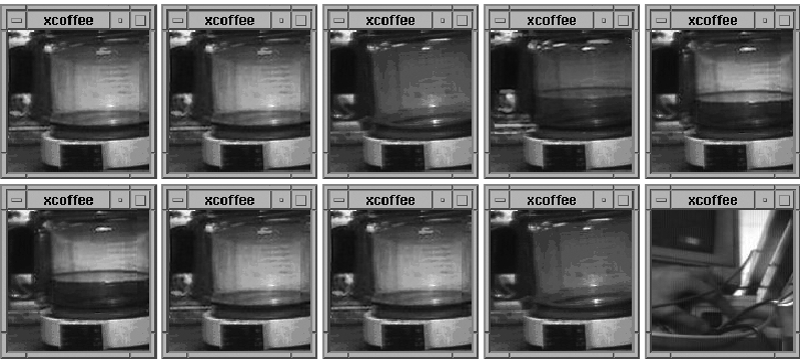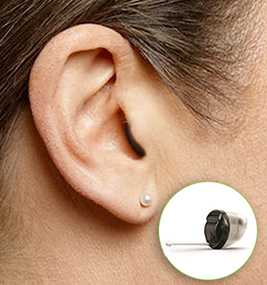Introduction
What is the first thing you
imagine when you hear the words “hearing loss”? Is it the American Sign
Language? Is it the deaf accents? Is it that old neighbour next door who needs
to have things repeated to him in loud voices? Is it someone who can speak 2
languages, volunteer in many organizations between her university classes,
major in Computer Science, and have a good GPA?
In case you have not
realized, the last statement was about me. Yet, it is not a typical image one
might have of a person with hearing loss. I have inherited many things from my
parents, like a typical human would, such as my eye colour from my dad and my
curly hair from my mom. But one of the things I unexpectedly inherited was DFNB1
(GJB2-Related), or in other words, Nonsyndromic Hearing Loss. From birth, my
world was always muffed and devoid of many sounds. But because I was diagnosed
with moderate-severe hearing loss, I was able to pick up very loud sounds,
especially if the source was close to one of my ears. For example, if someone
was to talk into my ear (in the volume above whispering), I would understand
what they say. But at the same time, I would not hear a single sound if my
window was open overnight. Not the teenagers in cars road racing, not the owls
hooting or morning birds chirping, not the sirens of the police cars or
ambulances, not the sound of dogs barking, and not the sound of people chatting
as they’re walking home from a party.
When I first arrived in
Canada, I received my first pair of hearing aids, and that changed my world
during the days. Suddenly I could pick up almost any sound a hearing person
would be able to detect, but I faced the challenge of communicating with those
around me. Very quickly did I have to learn two languages, Russian at home and
English in kindergarten. In a few years, I caught up with my language skills
and was able to fit in the mainstream society better. Not only did my teachers
and my family helped me a lot on my journey, I can also thank the technological
devices that got me to where I am today, and continue to help me in my future.
In this blog post, I will
discuss technological devices that benefit myself and the members of the Deaf
communities around the world. Most of them were invented for the original
purpose of helping us, and a few were used despite the fact they invented for
other reasons outside of assisting people with disabilities.
Technology Devices
Hearing Aids
Hearing aids is a rather major
development in the world of deafness. Most Deaf people are quite proud of being
Deaf, and such hearing devices can have divided opinions. Some are against, as
it meant that a person is conforming to the hearing culture. For people like
myself that do not identify themselves as Deaf but rather deaf or hard of
hearing (the capital D indicates the person is of the Deaf culture), we view
hearing devices as something that does not steal our identity, and assist us in
living through the hearing world more successfully. In my case, I do not live
close to a vibrate Deaf community nor do I expect the hearing world to
accommodate to all of my needs, so I do not worry that I rather speak than
sign, or that I wear hearing aids.
In terms of the history, modern
hearing aids did not exist until the end of 1880s when microphones and
telephones have already been invented.[i]
Prior to digital hearing aids, people have used ear horns, which acted as
trumpets for people to talk into. Since 1898 when Miller Reese Hutchison
invented Akouphone (the first electric hearing aid)[ii],
there have been steady changes to how hearing devices work almost annually and
how they interact with the daily lives of the users.
I remember the last time I
received my new hearing aids, my audiologist modified the settings through
connecting with a computer. The special software allows him to adjust the
volume level and balance of tones (high pitches and low pitches) so that it
fits my specific case, as hearing loss varies a lot between person to person.
It was insightful to see how hearing aids and other devices are getting more
digital as time goes on.
The following is a list
of the common hearing aids that are sold and used by consumers around the
world:
 |
Figure 2 - Source: https://floridamedicalhearing.com/main/wp-content/uploads/2013/09/hearing_aid_styles.jpg |
The reason that the above
image does not include the cochlear implants is because they work differently
than hearing aids. While sounds just get louder when wearing hearing aids, the
cochlear implants “replaces the function of the damaged inner ear”.[iii]
The name diverted from ‘cochlea’ which is the inner ear. The cochlear implants are more controversial than
hearing aids in the Deaf community as they are medical devices that can make
the person overcome deafness and hear again.
 |
| Figure 3 - Source: http://www.chhasudbury.com/wp-content/uploads/2013/04/cochlear-implant.jpg |
Despite the division it
causes in the Deaf community, I believe that the social impact of such small
computing devices is very positive, especially as time goes on and technology
advances. For people who are not part of the culture (due to isolation, loss of
hearing in an accident, or losing hearing at a later age), hearing advices can
help them get their lives back on track. This would not be the case 200 years
ago.
Alerting devices
One technological
device I cannot live without these days beside hearing aids is my alarm clock.
It has a strong vibrating system that shakes my mattress. Before I purchased
the alarm clock a few years ago, I used to have the vibrating alarms on my
cellphone to wake me up in the morning. In addition, since I was living with my
parents before the purchase, they usually wake me up in the morning as well.
Other examples of alerting devices include doorbell
alerting devices, smoke alarm devices, and baby-crying alerting systems. All of
these devices provide a signal when sound is present, usually in the form of
strobe lights or vibrations.[iv]
This is an alternative to having service animals (such as dogs), which can be
beneficial for those who cannot provide for a pet (financially, emotionally, or
otherwise) or live in small places. It’s amazing to think that without such
devices, people like myself may struggle to get to school or work on time.
Audio Loops
 |
|
Figure 5- A diagram of the audio loop (source: ovalwindowaudio.com)
|
For some people who attend events in the public places
such as meetings, places of worships and restaurants, they may find audio loops
useful.
The way it works is
that it is a “wire that circles a room and is connected to the sound system”.[v]
Then the sound is transmitted electromagnetically where the hearing devices
(hearing aids and cochlear implants) pick up.
Now
the devices do not automatically pick up the sounds, but it is simple to do so.
There is a telecoil switch (a small copper wire located inside) that must be
flipped. As a side note, I used the telecoil switch on my older hearing aids
for communication through my telephones.
I personally do not remember
if I have experience with audio loops in Canada or abroad. However, it is
required by Equality Act 2010 (as well as the Disability Discrimination Act
1995) in the U.K. to have them available wherever possible.[i]
Some examples include “the back
seats of all London taxis, which have a little microphone embedded in the
dashboard in front of the driver; at 18,000 post offices in the U.K.; at most
churches and cathedrals”. It is not common
in U.S.A or Canada, as the hearing loop systems have significant initial costs.[ii]
FM Systems
 |
|
Figure 6 - A diagram of the FM system
(source: http://aja.pubs.asha.org/article.aspx?articleid=1778306)
|
FM systems stand for “Frequency Modulation”, and it is a
type of technology that uses “radio waves to transmit sound from the sound
source to a receiver”.[viii]
As
a child, I remember using the FM systems from kindergarten to grade 8. I used
it for a short time in high school, but quickly decided to drop it. When I
started university, I was given the option again to use the FM systems, and I
was still against it. It is a useful device, but in my opinion, it was not
hassle free on my end. It was easier to use in elementary and middle school
because my FM system usually stay instead one classroom, and I had only two
teachers in each grade (French and Homeroom). It was very useful as children my
age were loud, so the FM system helped me hear the teacher better despite the
background noise. It was like having a little radio in my ears, where the voice
directly goes to. And because the microphone was close to the teacher’s face,
it did not pick up a lot of background noise. Of course, there would be days
when my teacher would accidentally clip the microphone backwards so that it rubs
against the shirt. In that case, I was quickly to (politely) interrupt the
beginning of the lesson to point it out.
Once high school started, I
had to transport my FM system from classroom to classroom, teach how to use it
to 4 teachers each semester, accommodate many substitute teachers, and remember
to bring it back to the classroom on the first floor when school is over for
the day. At the same time, I wanted to wean myself off the FM systems. In my
eyes, university and workplaces will not be always friendly to my hearing loss
unless I learn how to adapt to noisy environments. By the time I started
university, the lack of FM systems no longer bothered me. Still, I have habits
such as sitting at the front of the lecture hall and asking questions
frequently. I find that university classes were a bit easier to follow along
due to PowerPoint slides.
However, people may
continue to use it in university, as I have noticed. I cannot deny that the FM
systems have changed my life for the better, and such technology allowed myself
to be more involved in the social setting of school. Without it, I may have not
picked up English as quickly as I did when I started school.
Bluetooth
 |
| Figure 7 - Phonak ComPilot |
In 1994, Ericsson, a telecommunications company in
Sweden, decided to “replacing
the tangle of RS-232 cables that were then commonly used to communicate between
instruments with an RF-based ‘wireless’ alternative”.[ix] Since
then, companies have taken advantage of this through providing wireless
connections between cars, phones, laptops, and speakers, as well as other
devices. This is a technology advancement that was not designed with deaf users
in mind.
In my personal case, I find that the Bluetooth feature on my phone is useful.
I have a Phonak ComPilot device that allows me to listen to music and videos on
my laptop and iPod.[x] My
hearing aids connect to the ComPilot (which I like to call them as my wireless
headphones) which then connects to the device via Bluetooth. It is really convenient
to be able to hear music without disturbing others around me, and the sound
quality is better than wearing inner-ear headphones when I was younger. For
some users, they like to use the ComPilot as a way of speaking on the phone during
calls. Although it is not technology that is necessary, it certainly made my
life more comfortable than before.
Webcams
Apps that utilize
webcams is great for those who are hard of hearing and deaf. Not only you gain
the ability to see a speaker’s lips (and in some cases, read them), you also
gain the ability to use sign language rather than texting or talking verbally. The
history behind webcams is interesting.
 |
|
Figure 8 - A series of webcam pictures monitoring the
coffee pot at Cambridge
(source: http://digital-archaeology.org/wp-content/uploads/2014/02/Trojan_black_3.png)
|
This
is another technology advancement that was not designed with Deaf people in
mind. In fact, it was a product of staff at the Cambridge University Computer
Science Department who wanted a way to monitor their coffee pot from another
room.[xi]
They set up a webcam in 1991 to complete the objective and used it for 10
years. In 1994, QuickCam became available as the first commercial webcam which
quickly became popular.[xii]
Today, webcams can be found built into laptops and desktop screens, giving
access to more consumers than before. Services such as Skype and FaceTime are
popular for not just the Deaf community, but as well as for people who want to chat
face-to-face around the world. For other services like WhatsUp or Photo Booth
(on Macs), the webcams can take pictures that the users can share with others. This
type of computing technology has been positive for the general population, and
gave the Deaf people another way of communicating.
Conclusion
Since the start of
digital hearing aids in 1870s,[xiii]
technology and computing has gone a long way to improve the lives of those in
the Deaf community. Even in my short span of life, I have seen many
developments and changes over 2 decades.
One thing I feel very
appreciative is that computing technology only continues to improve the lives
of people with disabilities. I cannot imagine what it would be like in early
1900s where such devices did not exist for me. I would have trouble waking up
every morning, I would fall behind in school easily, and I would have trouble
being independent. For those who have other disabilities, whether it be visual
or learning or developmental, technology transform their lives in the ways most
people would not realize. Those without disabilities may not understand how
many little decisions and obstacles exist on a typical day, and how they
overcome them without a thought.
I imagine a future
where stronger and more adaptive technology will not only help people like
myself be independent, but also allow them to integrate better into mainstream
society as stronger contributing citizens. At the end of the day, we are all
human beings born on this planet to enjoy our lives for a short finite time.
References:
[i] Mills, Mara. "Hearing Aids and the
History of Electronics Miniaturization." IEEE Annals of the History of
Computing 33.2 (2011): 24-44
[ii] Mills, Mara. "Hearing Aids and the
History of Electronics Miniaturization." IEEE Annals of the History of
Computing 33.2 (2011): 24-44
[iii] http://www.cochlear.com/wps/wcm/connect/au/home/understand/hearing-and-hl/hl-treatments/cochlear-implant
[iv] https://www.asha.org/uploadedFiles/AIS-Hearing-Assistive-Technology.pdf
[v]
http://www.hearingloss.org/content/hearing-assistive-technology
[vi] Action on Hearing (formerly RNID/Deafness Research UK)
[vii] https://www.npr.org/templates/story/story.php?storyId=128268480
[viii]
https://www.asha.org/uploadedFiles/AIS-Hearing-Assistive-Technology.pdf
[x] https://www.phonak.com/ca/en/hearing-aids/accessories/phonak-com-pilot.html
[xi] http://www.cl.cam.ac.uk/coffee/coffee.html
[xii] https://www.pcworld.com/article/199112/victorian_scifi.html
[xiii] Mills, Mara. "Hearing Aids and the
History of Electronics Miniaturization." IEEE Annals of the History of
Computing 33.2 (2011): 24-44


